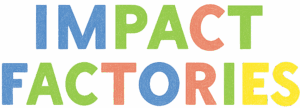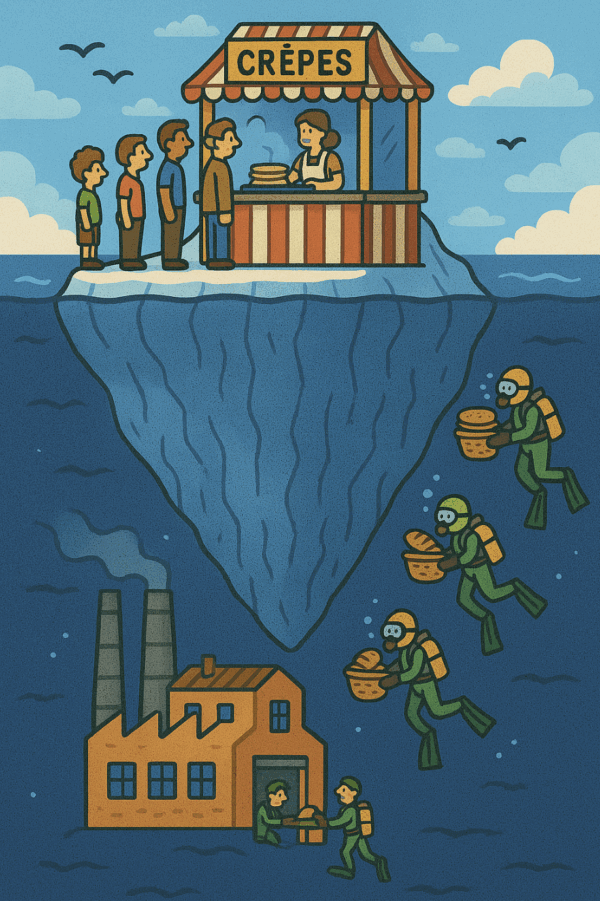For a long time, I believed that a product was simply the object you unpack: a smartwatch, organic cotton jeans, or the latest mobile app. As an engineer, it was obvious to me that the value lay in the creation of this object, and it was with this approach that I questioned my interviewees in my surveys. Three years of entrepreneurship forced me to shift my perspective. The real “product,” the one that creates and captures value, is a complete organism, a system; what the customer holds in their hand is only the tip of the iceberg.
Take the smartphone that accompanies us every day. It all starts far upstream, in the distant rumblings of lithium mines. Next come the engineering offices, where circuits are modeled, designs are adjusted, and the interface is polished. The assembly workshop takes over: robots, quality control, palletized boxes, transit under customs, regional warehouses. So far, the consumer has seen nothing; yet each step already influences its future use, price, and trustworthiness.
Then the product crosses the invisible border that separates the factory from the market. Marketing analysts roll out their funnel: targeting, storytelling, A/B testing. On Instagram, an image of a smartphone pops up in the potential buyer’s feed; they are unaware that an algorithm has selected it because their digital behavior resembles a thousand other profiles converted the day before.
Let’s take a look at one example of how this plays out in practice. The scene shifts to a brightly lit store or an e-commerce page. There, a salesperson trained in three e-learning modules touts record battery life; a recommendation engine suggests a matching case. With a click of confirmation, the reverse logistics of returns, serial number management, and payment gateway are activated. All the customer has seen is “Add to cart.”
Then comes the pivotal moment: the first power-up. Frustration-free packaging and a clear onboarding guide—months of design and writing culminate in a few seconds of seamless experience. If a bug occurs, a chatbot appears, backed by a support center on another continent, a knowledge base powered by artificial intelligence, and yesterday’s FAQs.
This is when the product’s life truly begins. Webinars guide users in discovering hidden features; a nightly update fixes a battery life issue; an email offers a trade-in program—and its discreet counterpart: the recycling chain that will recover, dismantle, and reintroduce the raw materials. At each stage, algorithms scrutinize usage, feeding into the roadmap for future versions.
Thus, the smartphone, the biodegradable shoe, and SaaS software are just the tip of the iceberg. Beneath the surface, an invisible architecture connects telecom operators, logistics companies, support teams, data scientists, lawyers, marketers, agronomists, and recyclers. It is this totality, from the mine to after-sales service, from the first advertising click to the renewal email, that deserves the name “product.” Understanding a product is not about contemplating a beautiful object; it is about exploring the ocean that carries it, layer by layer, until you discover that each interaction—acquisition, use, service, loyalty—forms a node in the same network.
Author of Impact Factories / Co-founder of Shy Robotics and Product Whys / Head of Product at Dassault Systèmes / Engineer passionate about innovation and entrepreneurship
Full bibliography here

